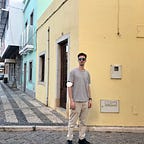Ironhack’s Prework: Design Thinking Challenge 1.
Innovation in technology is elevating our lives seamlessly on a day to day basis. Public transportation has seen great tools enhance the experience from everyday commuting to finding the most picturesque routes around bustling urban centres. One app that wants to combine it all is City Mapper. According to their website City Mapper is:
Making cities usable. We use the power of open data, mobile, and payment technology to make transport sustainable and hassle-free.
For this first UX challenge I will use the Design Thinking method to analyse and come up with an additional feature for public transport purchases.
Empathise: Public Transportation
While apps like Google Maps, Waze, Uber and ShareNow have significantly improved travelling from A to B in a city like Berlin. Taking the S- or U-Bahn still mixes virtual and local solutions to find the best routes and cheapest tickets. At best, the traveler needs two apps to: 1) find the route and choose the public transport of choice and 2) purchase the right ticket before entering the train in order to avoid a 60€ fine.
An intuitive solution of an in-app purchasing solution does not exist yet. Our audience in this case are users between 16 and 35, tech-savy, international and love to travel and discover new cities.
Ok, let’s get out and talk to people about this
Define: The Problem
While asking open-ended questions regarding navigating and using apps to help the interviewees, the following pain points were highlighted:
The app City Mapper was known by the interviewees and seem to work better when looking for direct routes regarding the subway especially for finding the fattest trip.
Problem 1: when finding a fast and efficient route in City Mapper the experience is better than Google Maps due to more accurate options. However it is not possible to buy the ticket directly from BVG (the local ticket provider) even though they have their own app. Therefore people have to go to the ticket machine or download another app. This takes around 10 mins extra and the experience is confusing especially for foreigners who always have to get used to the new environment.
Problem 2: The interviewee was not new to the city and already received a yearly ticket from work. The yearly ticket is only valid in zones A and B however. Therefore in a common scenario of travelling to the new BER airport. The user did not know what ticket to buy in order to avoid a 60€ penalty fee.
Step 1: Going to a physical machine to check for some kind of additional ticket after queuing
Step 2: Getting used to the UI of the machine, changing language
Step 3: Finding the info after 10 mins and going back into the BVG app because of convenience in her hand.
Step 4: Buying the additional ticket from zone B to C using Apple Pay/PayPal
As you can see a lot of inconvenient steps that can be reduced.
Ideate: The Solution💡
While showing empathy and listening to the interviewees pain points, a second step of finding solutions are simple observations in other apps. For example
Some keywords taken from the 30 min Interview that are available elsewhere are:
- In-app payments (Uber, Tier, ShareNow)
- Ticket info (BVG app / physical BVG machine)
- Existing valid tickets (BVG app)
- Area visualisation of current valid travel areas (ShareNow, Tier)
All these features / solutions seem to come in very handy for the interviewees. They would be useful and fit into the City Mapper app from my experience and from the feedback I have previously collected during the interview. With this is mind we continue to the prototyping.
Prototype: A first approach
So let’s take a look at how City Mapper could integrate these solution into their already existing app structure.
Screen 1: Search screen as usual which also lets you click to the submenu of the user account to Screen 5.
Screen 2: Choose a starting point (location service) and destination. — a first limitation of accessible travel areas with the current ticket could be helpful.
Screen 3: Choose City Mappers new feature of routing powers and choose S- or U-Bahn.
Screen 4: After choosing the preferred route and transportation method the system redirects to an BVG App API IF S- or U-Bahn or Bus are selected.
→ Login should happen automatically given the user is already registered at city mapper with the relevant payment method. In this case: PayPal.
Screen 5: Show user account to see any useful information (location, user preferences/payments, statistics). A new feature here are the “connected tickets such as seen in the BVG App.
Screen 6: Current connected accounts are BVG with a yearly zone AB travel plan and UBER PayPal connection.
Screen 7: Clicking on the BVG section a map with the valid travel zones is shown. It is possible to extend the ticket on the bottom left.
Screen 8: If an Extension ticket is bought either coming from Screen 4 or Screen 7 a ticket animation pops up and shows the user destination, zones, duration of validity and the price.
Learnings: Have fun and document
Even though this was only the first challenge I truly enjoyed talking to people and digging into the pain points. In my mind I could already imagine possible solution and wanted to crack on. The more patience I showed the more I could learn by writing everything down and reviewing afterwards.
Please let me know what you think and I am happy to connect :)
